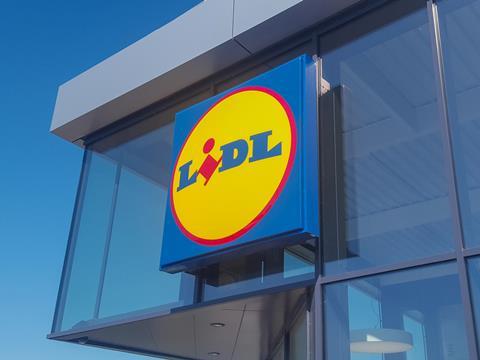
How does Lidl, one of the world’s largest food retailers, approach packaging sustainability? We had a conversation with Michael Janzer, Director of Corporate Social Responsibility Purchasing International at Lidl, to discuss the company’s views on the role that retailers play in this context, the EU’s Packaging and Packaging Waste Directive revisions, biodegradables, reuse, and much more.
To start, it would be great if you could give us a general overview of Lidl’s packaging sustainability strategy.
As one of the leading food retailers, we are aware of our responsibility towards people and nature. We take this social and ecological obligation very seriously. By doing so, we are taking appropriate measures at the level of the Schwarz Group, which also includes Lidl.
In 2018, for example, the companies of Schwarz Group adopted the international plastic strategy ‘REset Plastic’. This holistic international approach encompasses five fields of action: from prevention and design to recycling and disposal to innovation and education.
The companies of Schwarz Group have set themselves the goal of making 100 percent of their own brand packaging as recyclable as possible and using 20 percent less plastic by 2025 (compared to 2017). In addition, we want to use an average of 25 percent recyclate in our own brand packaging by 2025. Together we are pursuing the vision of “Less plastic - closed loops”.
Broadly speaking, what is the role of retailers like Lidl in the packaging sustainability space, compared to the rest of the value chain?
We understand ourselves as drivers of sustainable packaging solutions. We believe that this will lead to certain market developments. Nonetheless, an industry-wide standardized approach is required to generate impact.
I’m sure you’ve seen the news regarding the EU’s revisions to its Packaging and Packaging Waste Directive, which have been the cause of much debate in our industry in recent times. What are your thoughts on these proposals, and will they affect how Lidl functions?
The EU Commission’s proposal for the new Packaging and Packaging Waste Regulation (PPWR) is a major and important step on Europe’s path to a sustainable circular economy. As part of the Schwarz Group, we support the EU’s goal formulated therein of making all packaging reusable or recyclable in an economically viable manner by 2030.
If we consistently follow this path, the European Union will become a global role model in the avoidance of waste and the environmentally friendly recycling of valuable materials. In order to implement recycling consistently, we need Europe-wide standards for the recyclability of packaging, to which all producers and users of packaging on our continent must adhere in the future.
Does Lidl have preferences in terms of the packaging materials it favours, or is it relatively agnostic on this front?
Every recyclable material used has its advantages and disadvantages, which is why we do not categorically exclude or prefer any packaging materials. Paper, glass, and aluminium can currently be recycled to a higher quality, while plastics, for example, have important properties that we need to focus on, especially in the food sector.
Much more important than the question of the type of material is therefore the question of the recyclability of the material and, above all, the design of the packaging. The basic prerequisite for an economical and high-quality recycling of packaging waste is, among other things, the recyclable design of packaging.
This indirectly benefits the increase of recyclate use. From our point of view, this means in detail Packaging should ideally consist of only one material so that it can be optimally recycled. Wherever possible, we must move away from composite materials and increase the use of mono-packaging.
I’d like to ask you about biodegradables – does Lidl see them as potentially being a viable alternative to conventional materials?
We examine all possible new solutions, test and evaluate them. Standards for compostability and biodegradability of materials should be harmonised across the EU.
What is Lidl’s perspective on reusable packaging systems, and what can be done to make the use of them more widespread?
We support the ecological optimisation and recycling of packaging. Reusable systems (e.g. pallets) and efficient deposit systems (e.g. beverage packaging) play a central, complementary role here. The promotion of reusable packaging is not an end in itself, and should only take place where reuse is demonstrably ecologically advantageous.
The ecological advantageousness must be based on a comprehensive scientific consideration that compares the area-wide collection, return, cleaning and refilling of reusable packaging as a whole with the production, filling and collection and high-quality recycling of corresponding one-way packaging. Against this background, the sole consideration of waste avoidance is not sufficient and cannot guarantee ecological advantageousness.
The evaluation of the ecological advantageousness of packaging should be carried out on the basis of uniform criteria. A corresponding evaluation procedure should be developed at the European level and prescribed throughout the EU.
If you liked this article, you might also enjoy:
McKinsey on whether or not on-pack sustainability claims affect consumer spending
A deep dive into the most important packaging sustainability trends and solutions


















No comments yet